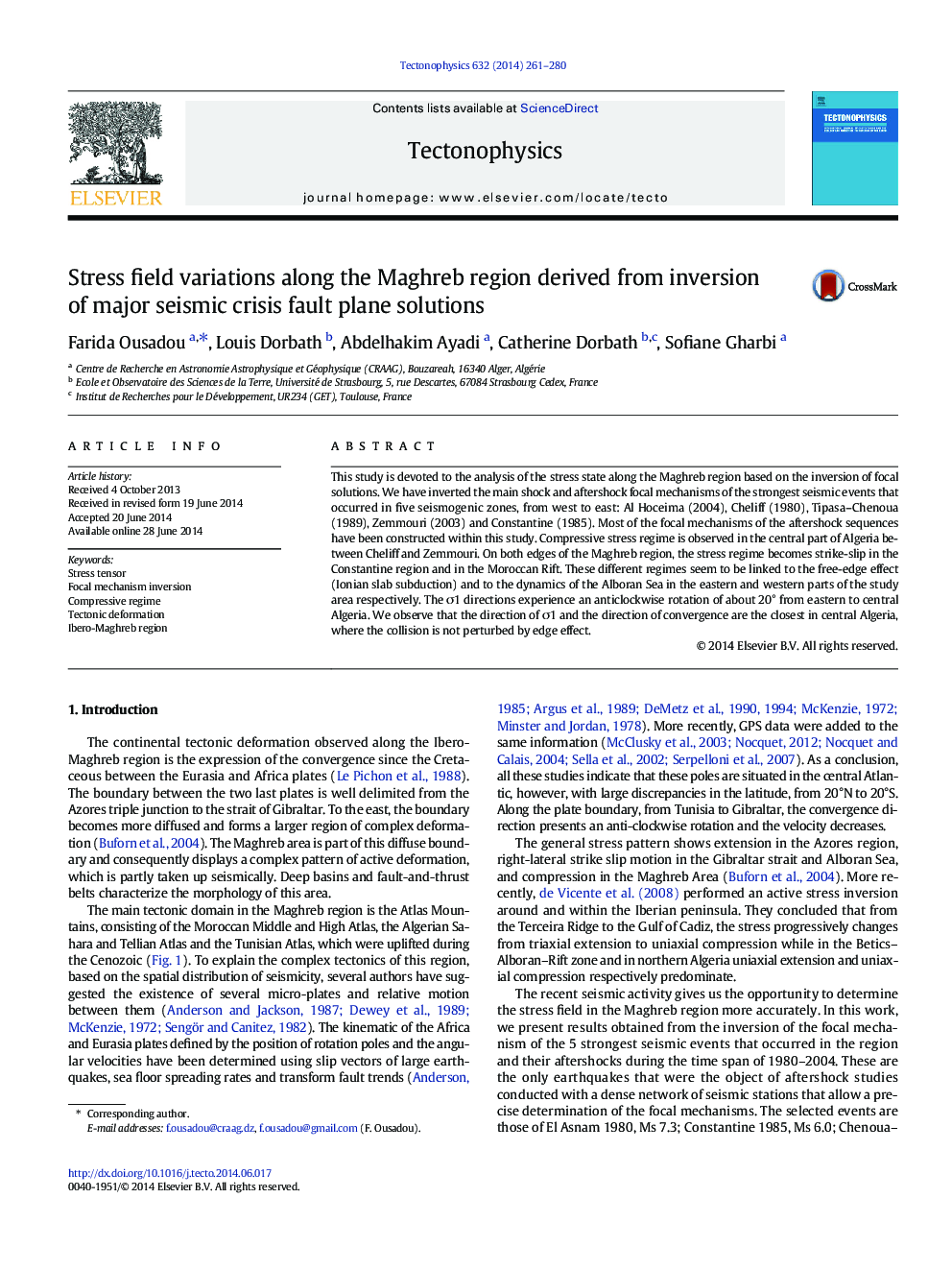| Article ID | Journal | Published Year | Pages | File Type |
|---|---|---|---|---|
| 4691865 | Tectonophysics | 2014 | 20 Pages |
Abstract
This study is devoted to the analysis of the stress state along the Maghreb region based on the inversion of focal solutions. We have inverted the main shock and aftershock focal mechanisms of the strongest seismic events that occurred in five seismogenic zones, from west to east: Al Hoceima (2004), Cheliff (1980), Tipasa-Chenoua (1989), Zemmouri (2003) and Constantine (1985). Most of the focal mechanisms of the aftershock sequences have been constructed within this study. Compressive stress regime is observed in the central part of Algeria between Cheliff and Zemmouri. On both edges of the Maghreb region, the stress regime becomes strike-slip in the Constantine region and in the Moroccan Rift. These different regimes seem to be linked to the free-edge effect (Ionian slab subduction) and to the dynamics of the Alboran Sea in the eastern and western parts of the study area respectively. The Ï1 directions experience an anticlockwise rotation of about 20° from eastern to central Algeria. We observe that the direction of Ï1 and the direction of convergence are the closest in central Algeria, where the collision is not perturbed by edge effect.
Keywords
Related Topics
Physical Sciences and Engineering
Earth and Planetary Sciences
Earth-Surface Processes
Authors
Farida Ousadou, Louis Dorbath, Abdelhakim Ayadi, Catherine Dorbath, Sofiane Gharbi,
